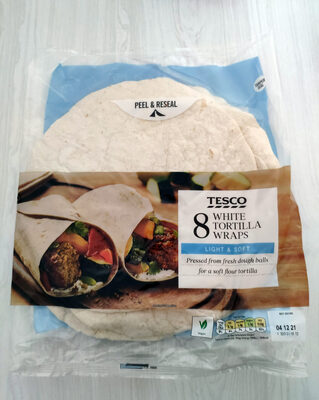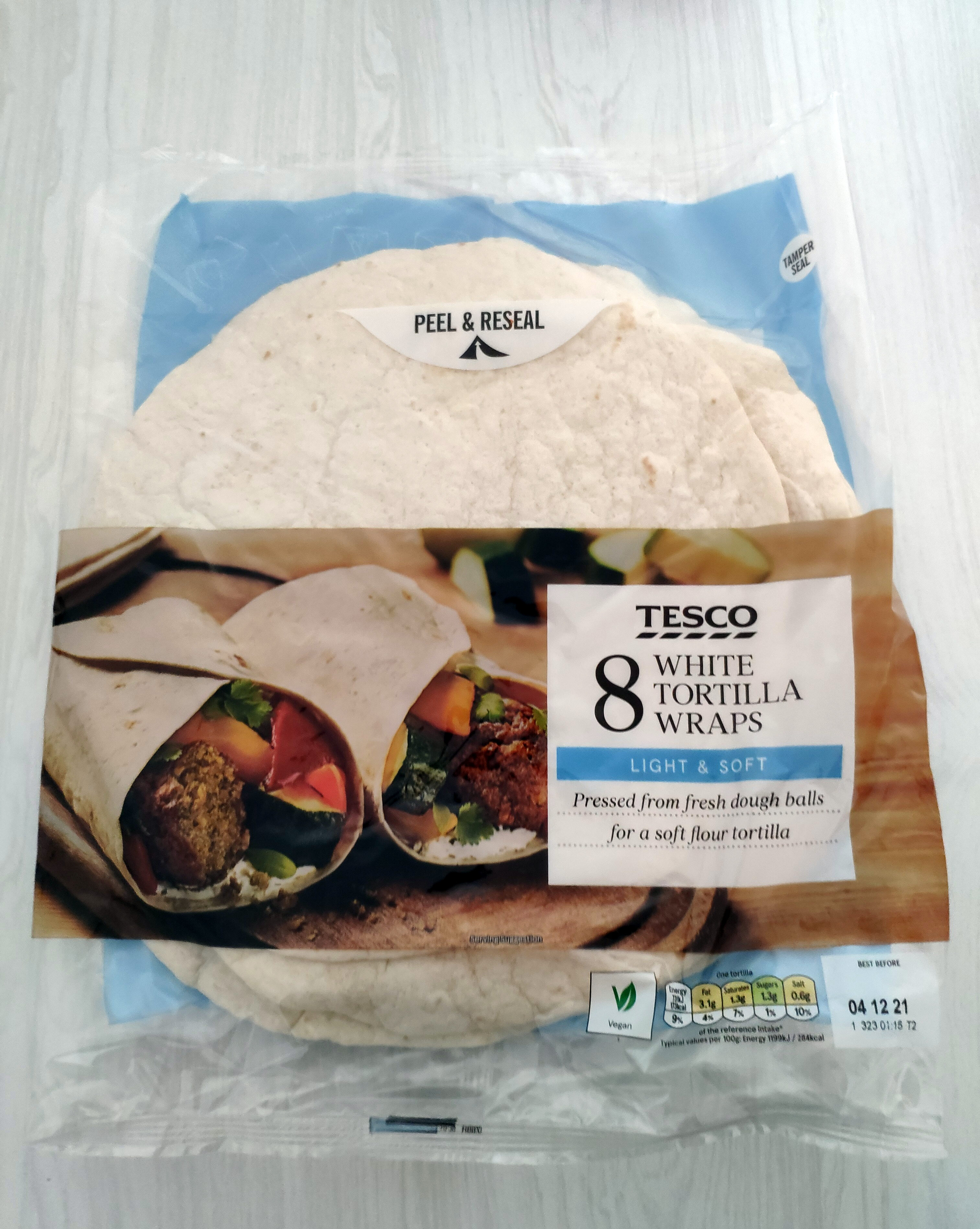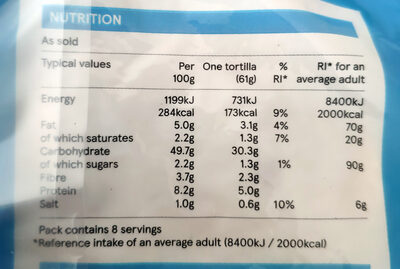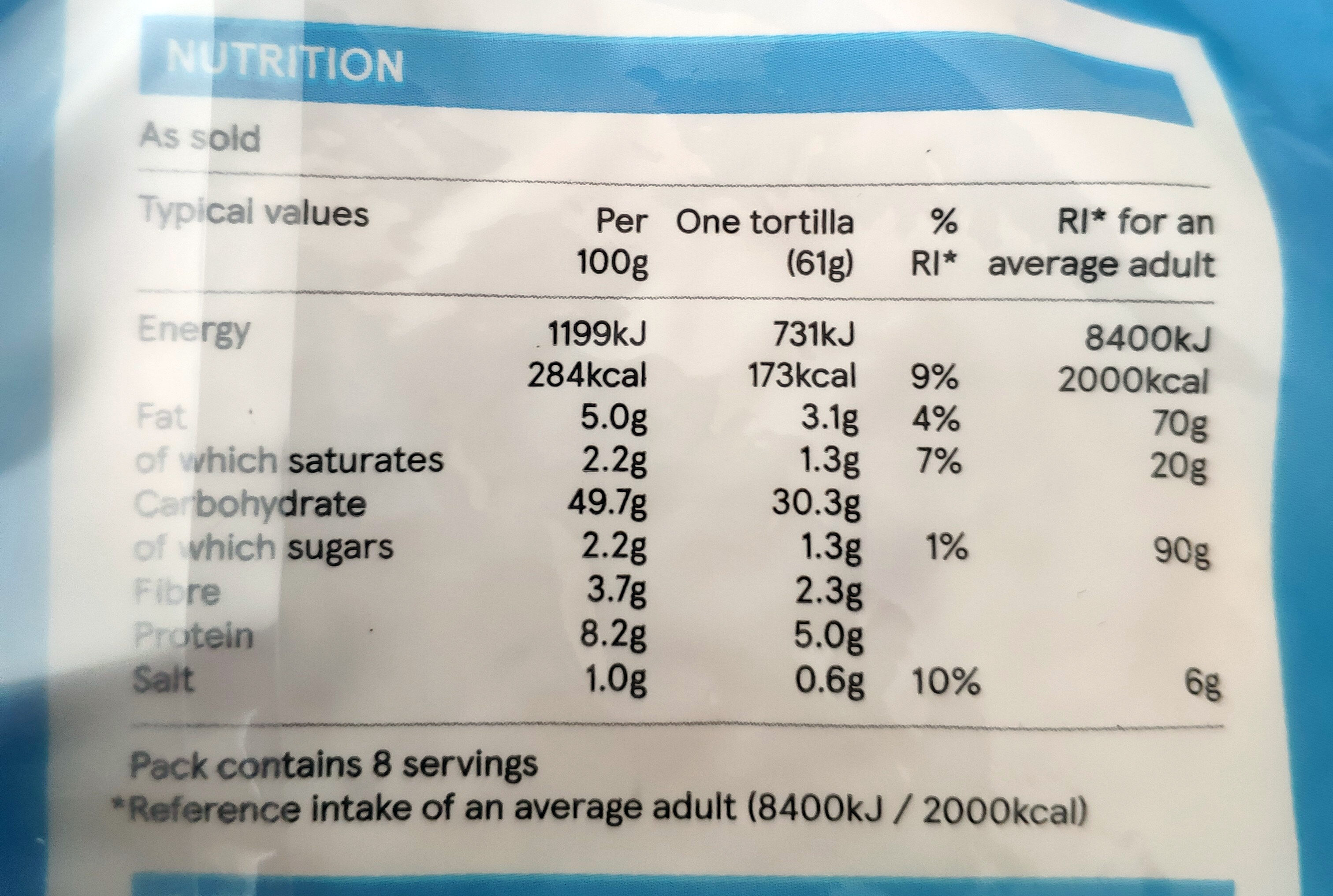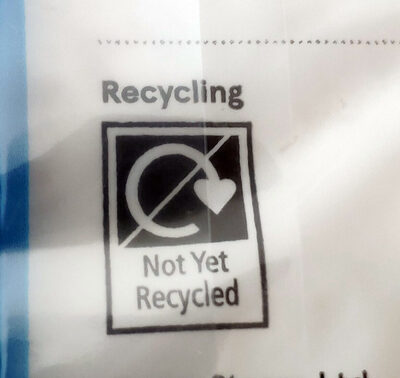White Tortilla Wraps - Tesco - 8 Pack
Aquesta pàgina del producte no està completa. Podeu ajudar a completar-la editant-la i afegint-hi més dades a partir de les fotos ja disponibles, o fent-ne més amb l'aplicació de androide o iPhone / iPad. Gràcies!
×
Codi de barres: 5057967342044 (EAN / EAN-13)
Nom comú: Plain wheat tortilla wraps
Quantitat: 8 Pack
Empaquetament: en:Ldpe-bag
Marques: Tesco
Categories: Aliments i begudes amb base vegetal, Aliments amb base vegetal, Cereals i patates, Pans, en:Flatbreads, en:White breads, en:Wheat breads
Etiquetes, certificacions, premis: Vegetarià, Vegà
Botigues: Tesco
Països on es va vendre: Espanya, Regne Unit
Matching with your preferences
Report a problem
Fonts de dades
Producte afegit per kiliweb
Última modificació de la pàgina del producte per inf.
La pàgina del producte, també editada per alia, back-ache, ecoscore-impact-estimator, elcoco, hungergames, lewisfoxy1, openfoodfacts-contributors, roboto-app, swipe-studio, teolemon, thaialagata, yuka.ZXJJbUxQNGtwdUFPcDhRZDV6bjMxZmROL1kyb1pHU1hBTThmSWc9PQ.
